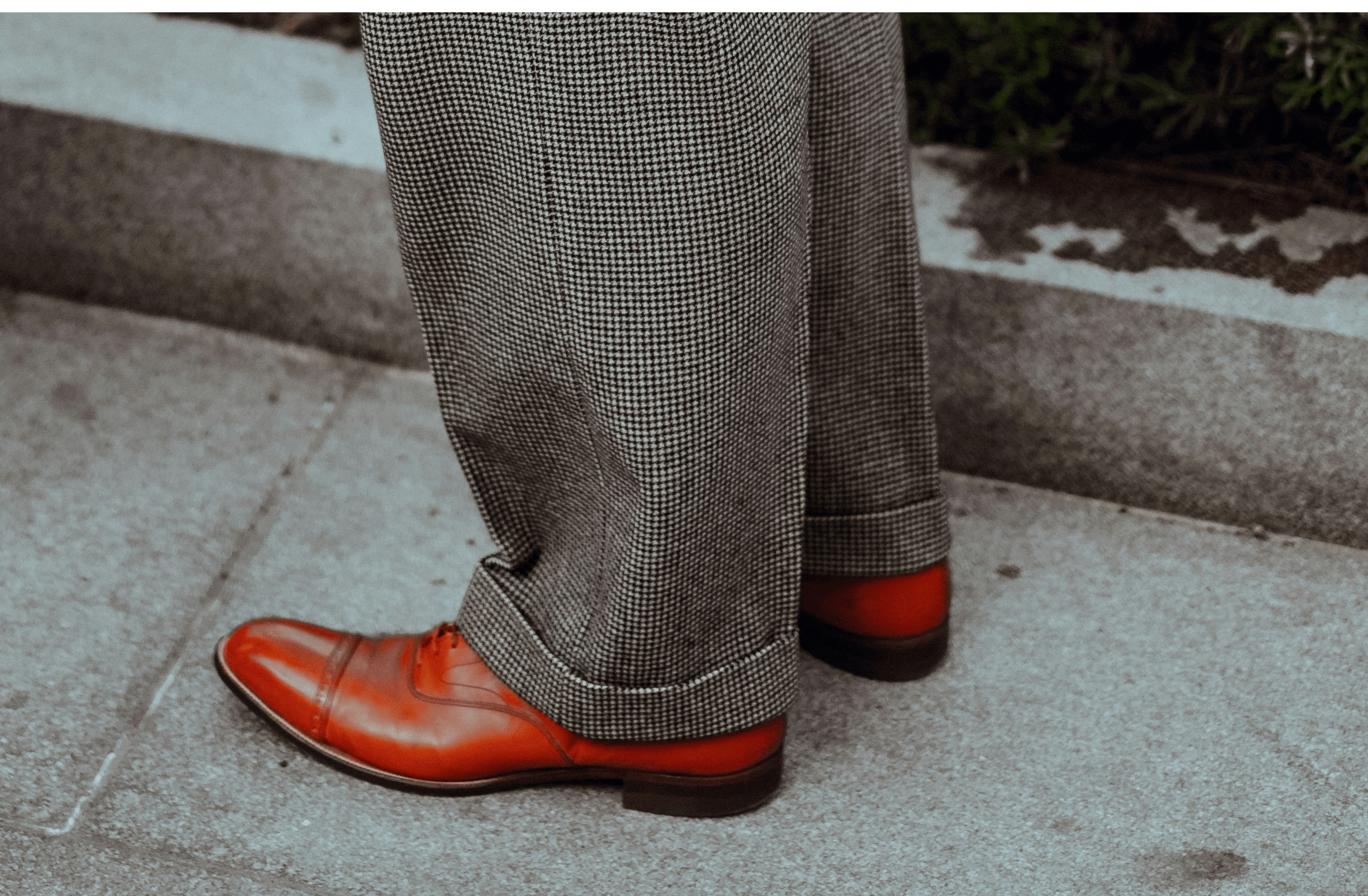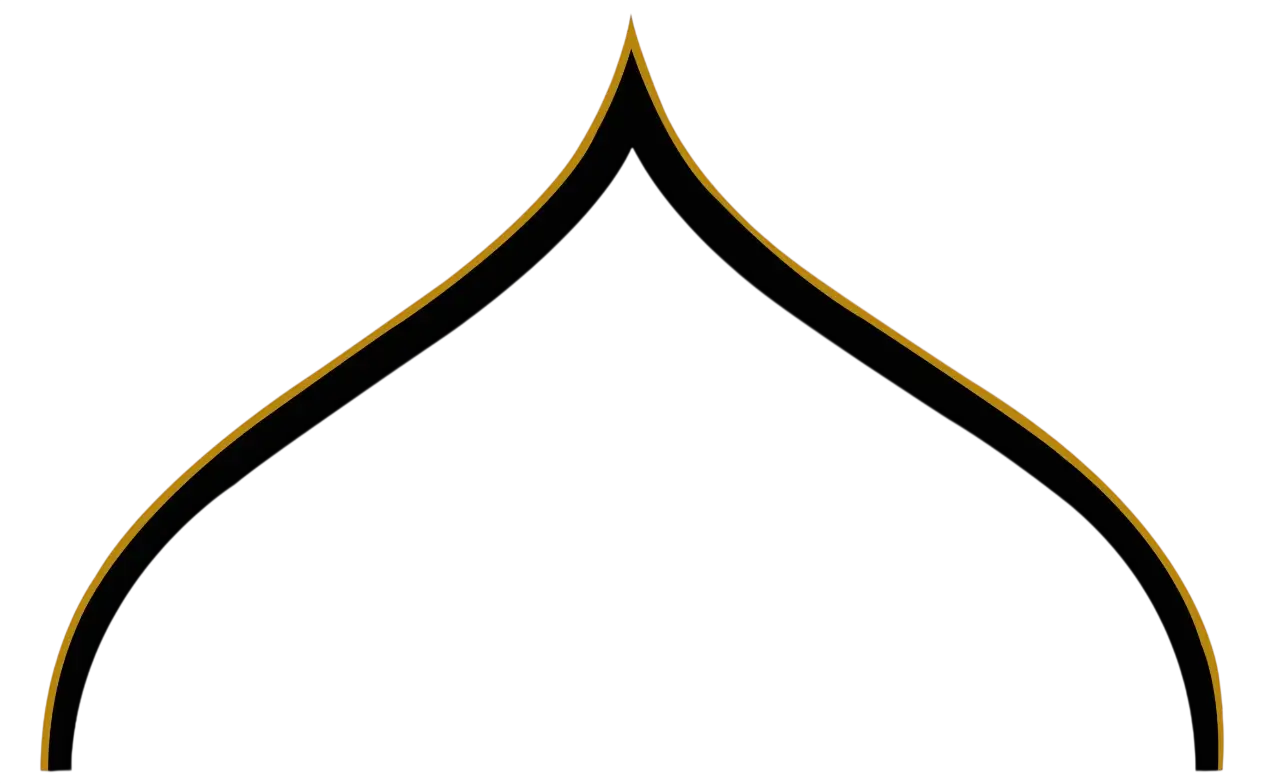
Wearing a garment below the ankles
Islam prescribes a dress code for both men and women. Men may wear whatever does not show the 'awrah, but what about wearing a garment below the ankles? Is it forbidden to do that or is it merely a Sunnah to wear it above the ankles?
The issue of wearing a garment below the ankles, also known as 'Isbaal' in Arabic, includes everything that is worn and can be dragged on the ground. This would be pants, izaar, mantle, thobe, shirt, turban, etc. It does not mean socks or shoes.
 حدثنا أبو بكر قال حدثنا حسين بن علي عن ابن أبي رواد عن سالم عن أبيه عن النبي صلى الله عليه وسلم قال : الإسبال في الإزار والقميص والعمامة ، من جر منها شيئا خيلاء لم ينظر الله إليه يوم القيامة
حدثنا أبو بكر قال حدثنا حسين بن علي عن ابن أبي رواد عن سالم عن أبيه عن النبي صلى الله عليه وسلم قال : الإسبال في الإزار والقميص والعمامة ، من جر منها شيئا خيلاء لم ينظر الله إليه يوم القيامة
[المصنف - ابن أبي شيبة الكوفي - ج ٦ - الصفحة ٣١]
The Prophet (ﷺ) said:
"Isbaal includes izaar, garments (thobe, shirt), and turbans. Whoever drags any of it out of arrogance, then Allah will not look at him on Yawmul Qiyama."
[Al-Musannaf Ibn Abi Shaybah 6/31]
There are two main groups regarding the issue of wearing a garment below the ankles, those who deem it to be forbidden, and those who deem it to be permissible.
In this article, you will come to know if men are allowed to wear a garment below the ankles, according to the understanding of the Salaf Saliheen.
Wearing garment below the ankles according to the Salaf Saliheen
The matter of wearing a garment below the ankles is one that the madhabs discussed. Others among the Salaf Saliheen have also discussed this issue.
So what have they said about this issue? According to the majority of scholars among the Salaf Saliheen, wearing a garment below the ankles is not forbidden, but only when it is done out of arrogance. They came to this conclusion based on the understanding of the Sahaba.
 The Prophet (ﷺ) said:
"The part of an izaar (lower garment) which hangs below the ankles is in the Fire."
[Sahih al-Bukhari 5787]
The Prophet (ﷺ) said:
"The part of an izaar (lower garment) which hangs below the ankles is in the Fire."
[Sahih al-Bukhari 5787]
 The Prophet (ﷺ) said:
"Allah will not look on the Day of Judgment at him who drags his robe out of pride."
[Sahih al-Bukhari 3665]
The Prophet (ﷺ) said:
"Allah will not look on the Day of Judgment at him who drags his robe out of pride."
[Sahih al-Bukhari 3665]
Narrations on wearing the garment below the ankles without arrogance
 حَدَّثَنِي مُحَمَّدٌ، أَخْبَرَنَا عَبْدُ الأَعْلَى، عَنْ يُونُسَ، عَنِ الْحَسَنِ، عَنْ أَبِي بَكْرَةَ ـ رضى الله عنه ـ قَالَ خَسَفَتِ الشَّمْسُ وَنَحْنُ عِنْدَ النَّبِيِّ صلى الله عليه وسلم فَقَامَ يَجُرُّ ثَوْبَهُ مُسْتَعْجِلاً، حَتَّى أَتَى الْمَسْجِدَ وَثَابَ النَّاسُ فَصَلَّى رَكْعَتَيْنِ، فَجُلِّيَ عَنْهَا، ثُمَّ أَقْبَلَ عَلَيْنَا وَقَالَ " إِنَّ الشَّمْسَ وَالْقَمَرَ آيَتَانِ مِنْ آيَاتِ اللَّهِ، فَإِذَا رَأَيْتُمْ مِنْهَا شَيْئًا فَصَلُّوا وَادْعُوا اللَّهَ حَتَّى يَكْشِفَهَا ".
حَدَّثَنِي مُحَمَّدٌ، أَخْبَرَنَا عَبْدُ الأَعْلَى، عَنْ يُونُسَ، عَنِ الْحَسَنِ، عَنْ أَبِي بَكْرَةَ ـ رضى الله عنه ـ قَالَ خَسَفَتِ الشَّمْسُ وَنَحْنُ عِنْدَ النَّبِيِّ صلى الله عليه وسلم فَقَامَ يَجُرُّ ثَوْبَهُ مُسْتَعْجِلاً، حَتَّى أَتَى الْمَسْجِدَ وَثَابَ النَّاسُ فَصَلَّى رَكْعَتَيْنِ، فَجُلِّيَ عَنْهَا، ثُمَّ أَقْبَلَ عَلَيْنَا وَقَالَ " إِنَّ الشَّمْسَ وَالْقَمَرَ آيَتَانِ مِنْ آيَاتِ اللَّهِ، فَإِذَا رَأَيْتُمْ مِنْهَا شَيْئًا فَصَلُّوا وَادْعُوا اللَّهَ حَتَّى يَكْشِفَهَا ".
Abu Bakr narrated:
The solar eclipse occurred while we were sitting with the Prophet (ﷺ) He got up dragging his garment (on the ground) hurriedly till he reached the mosque The people turned (to the mosque) and he offered a two-rak`at prayer whereupon the eclipse was over and he traced us and said, "The sun and the moon are two signs among the signs of Allah, so if you see a thing like this (eclipse) then offer the prayer and invoke Allah till He remove that state."
[Sahih al-Bukhari 5785]
 وَحَدَّثَنَا أَبُو بَكْرِ بْنُ أَبِي شَيْبَةَ، وَزُهَيْرُ بْنُ حَرْبٍ، جَمِيعًا عَنِ ابْنِ عُلَيَّةَ، - قَالَ زُهَيْرٌ حَدَّثَنَا إِسْمَاعِيلُ بْنُ إِبْرَاهِيمَ، - عَنْ خَالِدٍ، عَنْ أَبِي قِلاَبَةَ، عَنْ أَبِي الْمُهَلَّبِ، عَنْ عِمْرَانَ بْنِ حُصَيْنٍ، أَنَّ رَسُولَ اللَّهِ صلى الله عليه وسلم صَلَّى الْعَصْرَ فَسَلَّمَ فِي ثَلاَثِ رَكَعَاتٍ ثُمَّ دَخَلَ مَنْزِلَهُ فَقَامَ إِلَيْهِ رَجُلٌ يُقَالُ لَهُ الْخِرْبَاقُ وَكَانَ فِي يَدَيْهِ طُولٌ فَقَالَ يَا رَسُولَ اللَّهِ . فَذَكَرَ لَهُ صَنِيعَهُ . وَخَرَجَ غَضْبَانَ يَجُرُّ رِدَاءَهُ حَتَّى انْتَهَى إِلَى النَّاسِ فَقَالَ " أَصَدَقَ هَذَا " . قَالُوا نَعَمْ . فَصَلَّى رَكْعَةً ثُمَّ سَلَّمَ ثُمَّ سَجَدَ سَجْدَتَيْنِ ثُمَّ سَلَّمَ .
وَحَدَّثَنَا أَبُو بَكْرِ بْنُ أَبِي شَيْبَةَ، وَزُهَيْرُ بْنُ حَرْبٍ، جَمِيعًا عَنِ ابْنِ عُلَيَّةَ، - قَالَ زُهَيْرٌ حَدَّثَنَا إِسْمَاعِيلُ بْنُ إِبْرَاهِيمَ، - عَنْ خَالِدٍ، عَنْ أَبِي قِلاَبَةَ، عَنْ أَبِي الْمُهَلَّبِ، عَنْ عِمْرَانَ بْنِ حُصَيْنٍ، أَنَّ رَسُولَ اللَّهِ صلى الله عليه وسلم صَلَّى الْعَصْرَ فَسَلَّمَ فِي ثَلاَثِ رَكَعَاتٍ ثُمَّ دَخَلَ مَنْزِلَهُ فَقَامَ إِلَيْهِ رَجُلٌ يُقَالُ لَهُ الْخِرْبَاقُ وَكَانَ فِي يَدَيْهِ طُولٌ فَقَالَ يَا رَسُولَ اللَّهِ . فَذَكَرَ لَهُ صَنِيعَهُ . وَخَرَجَ غَضْبَانَ يَجُرُّ رِدَاءَهُ حَتَّى انْتَهَى إِلَى النَّاسِ فَقَالَ " أَصَدَقَ هَذَا " . قَالُوا نَعَمْ . فَصَلَّى رَكْعَةً ثُمَّ سَلَّمَ ثُمَّ سَجَدَ سَجْدَتَيْنِ ثُمَّ سَلَّمَ .
'Imran ibn Husayn narrated:
"The Messenger of Allah (ﷺ) led the afternoon prayer and gave the salutation at the end of three rak'ahs and then went into his house. A man who is called al-Khirbaq, who had long arms, got up and went to him, and mentioned to him what he had done. He (ﷺ) came out angrily trailing his mantle, and when he came to the people he said: Is this man telling the truth? They said: Yes. He then prayed one rak'ah (making it four rak'ahs) and then gave salutation and then performed two prostrations (of forgetfulness) and then gave salutation."
[Sahih Muslim 574a]
 حَدَّثَنَا أَحْمَدُ بْنُ يُونُسَ، حَدَّثَنَا زُهَيْرٌ، حَدَّثَنَا مُوسَى بْنُ عُقْبَةَ، عَنْ سَالِمِ بْنِ عَبْدِ اللَّهِ، عَنْ أَبِيهِ ـ رضى الله عنه ـ عَنِ النَّبِيِّ صلى الله عليه وسلم قَالَ " مَنْ جَرَّ ثَوْبَهُ خُيَلاَءَ لَمْ يَنْظُرِ اللَّهُ إِلَيْهِ يَوْمَ الْقِيَامَةِ ". قَالَ أَبُو بَكْرٍ يَا رَسُولَ اللَّهِ إِنَّ أَحَدَ شِقَّىْ إِزَارِي يَسْتَرْخِي، إِلاَّ أَنْ أَتَعَاهَدَ ذَلِكَ مِنْهُ. فَقَالَ النَّبِيُّ صلى الله عليه وسلم " لَسْتَ مِمَّنْ يَصْنَعُهُ خُيَلاَءَ ".
حَدَّثَنَا أَحْمَدُ بْنُ يُونُسَ، حَدَّثَنَا زُهَيْرٌ، حَدَّثَنَا مُوسَى بْنُ عُقْبَةَ، عَنْ سَالِمِ بْنِ عَبْدِ اللَّهِ، عَنْ أَبِيهِ ـ رضى الله عنه ـ عَنِ النَّبِيِّ صلى الله عليه وسلم قَالَ " مَنْ جَرَّ ثَوْبَهُ خُيَلاَءَ لَمْ يَنْظُرِ اللَّهُ إِلَيْهِ يَوْمَ الْقِيَامَةِ ". قَالَ أَبُو بَكْرٍ يَا رَسُولَ اللَّهِ إِنَّ أَحَدَ شِقَّىْ إِزَارِي يَسْتَرْخِي، إِلاَّ أَنْ أَتَعَاهَدَ ذَلِكَ مِنْهُ. فَقَالَ النَّبِيُّ صلى الله عليه وسلم " لَسْتَ مِمَّنْ يَصْنَعُهُ خُيَلاَءَ ".
'Abdullah ibn 'Umar narrated:
The Prophet (ﷺ) said Allah will not look, on the Day of Resurrection at the person who drags his garment out of conceit (arrogance). On that Abu Bakr said, "O Allah's Messenger (ﷺ), One of the two sides of my izaar drop, unless I pay attention to it." The Prophet (ﷺ) said, 'You are not one of those who do that out of conceit."
[Sahih al-Bukhari 5784]
 فَقُمْتُ مَعَ بِلاَلٍ فَجَعَلْتُ أُلْقِيهِ عَلَيْهِ وَيُؤَذِّنُ بِهِ - قَالَ - فَسَمِعَ ذَلِكَ عُمَرُ بْنُ الْخَطَّابِ وَهُوَ فِي بَيْتِهِ فَخَرَجَ يَجُرُّ رِدَاءَهُ وَيَقُولُ وَالَّذِي بَعَثَكَ بِالْحَقِّ يَا رَسُولَ اللَّهِ لَقَدْ رَأَيْتُ مِثْلَ مَا رَأَى
فَقُمْتُ مَعَ بِلاَلٍ فَجَعَلْتُ أُلْقِيهِ عَلَيْهِ وَيُؤَذِّنُ بِهِ - قَالَ - فَسَمِعَ ذَلِكَ عُمَرُ بْنُ الْخَطَّابِ وَهُوَ فِي بَيْتِهِ فَخَرَجَ يَجُرُّ رِدَاءَهُ وَيَقُولُ وَالَّذِي بَعَثَكَ بِالْحَقِّ يَا رَسُولَ اللَّهِ لَقَدْ رَأَيْتُ مِثْلَ مَا رَأَى
[سنن أبي داود ٤٩٩]
'Abdullah ibn Zayd narrated:
"I teached Bilal the adhan, so he picked up on it and gave the adhan, then 'Umar ibn al-Khattab heard it while he was in his house and came out trailing his cloak and said: Messenger of Allah, by Him who has sent you with the truth, I have also seen (in a dream) the kind of thing (adhan) as has been shown to him ('Abdullah ibn Zayd)."
[Sunan Abu Dawud 499]
 فَقُمْتُ مَعَ بِلاَلٍ فَجَعَلْتُ أُلْقِيهِ عَلَيْهِ وَيُؤَذِّنُ بِهِ - قَالَ - فَسَمِعَ ذَلِكَ عُمَرُ بْنُ الْخَطَّابِ وَهُوَ فِي بَيْتِهِ فَخَرَجَ يَجُرُّ رِدَاءَهُ وَيَقُولُ وَالَّذِي بَعَثَكَ بِالْحَقِّ يَا رَسُولَ اللَّهِ لَقَدْ رَأَيْتُ مِثْلَ مَا رَأَى
فَقُمْتُ مَعَ بِلاَلٍ فَجَعَلْتُ أُلْقِيهِ عَلَيْهِ وَيُؤَذِّنُ بِهِ - قَالَ - فَسَمِعَ ذَلِكَ عُمَرُ بْنُ الْخَطَّابِ وَهُوَ فِي بَيْتِهِ فَخَرَجَ يَجُرُّ رِدَاءَهُ وَيَقُولُ وَالَّذِي بَعَثَكَ بِالْحَقِّ يَا رَسُولَ اللَّهِ لَقَدْ رَأَيْتُ مِثْلَ مَا رَأَى
[سنن أبي داود ٤٩٩]
Abu Sa'id al-Khudri narrated:
I went to Quba' with the Messenger of Allah (ﷺ) on Monday till we reached (the habitation) of Banu Salim. The Messenger of Allah (ﷺ) stood at the door of 'Itban and called him loudly. So he came out dragging his lower garnment. Upon this the Messenger of Allah (ﷺ) said: We have made this man to make haste.
[Sahih Muslim 343a]
 حدثنا أبو بكر قال حدثنا عيسى بن يونس عن الأوزاعي عن عمرو بن مهاجر قال : كانت قمص عمر بن عبد العزيز وجبابه ما بين الكعب والشراك
حدثنا أبو بكر قال حدثنا عيسى بن يونس عن الأوزاعي عن عمرو بن مهاجر قال : كانت قمص عمر بن عبد العزيز وجبابه ما بين الكعب والشراك
[المصنف - ابن أبي شيبة الكوفي - ج ٦ - الصفحة ٣١]
'Amr ibn Muhaajir said:
"The garment of 'Umar ibn 'Abdul-'Aziz would hang between his heel and ankle."
[Al-Musannaf Ibn Abi Shaybah 6/31]
 حدثنا أبو بكر قال حدثنا ابن مهدي عن سفيان عن داود بن قيس قال : رأيت القاسم قميصه إلى الكعب
حدثنا أبو بكر قال حدثنا ابن مهدي عن سفيان عن داود بن قيس قال : رأيت القاسم قميصه إلى الكعب
[المصنف - ابن أبي شيبة الكوفي - ج ٦ - الصفحة ٣١]
Dawud ibn Qays narrated:
I saw Al-Qaasim, his shirt reaching to the ankles.
[Al-Musannaf Ibn Abi Shaybah 6/31]
 حدثنا أبو بكر قال حدثنا ابن مهدي عن أبي عوانة عن مغيرة قال : كان إبراهيم قميصه على ظهر القدم
حدثنا أبو بكر قال حدثنا ابن مهدي عن أبي عوانة عن مغيرة قال : كان إبراهيم قميصه على ظهر القدم
[المصنف - ابن أبي شيبة الكوفي - ج ٦ - الصفحة ٣١]
Mugheerah said:
"Ibrahim an-Nakha'ee used to wear a shirt reaching his heels."
[Al-Musannaf Ibn Abi Shaybah 6/31]
 حدثنا سليمان بن حرب ، قال :حدَّثنا حماد بن زيد، قال : " أمرَنِي أيّوب (السختياني)أن أقطعَ له قميصاً قال: اجعلْه يضرِبُ ظَهْرَ القدم، واجعَلْ فَمَ كُمِّهِ شبراً
حدثنا سليمان بن حرب ، قال :حدَّثنا حماد بن زيد، قال : " أمرَنِي أيّوب (السختياني)أن أقطعَ له قميصاً قال: اجعلْه يضرِبُ ظَهْرَ القدم، واجعَلْ فَمَ كُمِّهِ شبراً
[العلل للإمام أحمد رقم ٨٤١]
Hammad ibn Zayd narrated:
"Ayyub al-Sakhtiyani ordered me to cut a shirt for him. He said to me: 'Make it reach the back of the foot, and make its collar a span (approximately 22.86 centimeters or 9 inches) long.'"
[Al-'Ilal 841 of Imam Ahmad]
 حَدَّثَنَا مُحَمَّدُ بْنُ عِيسَى بْنِ الطَّبَّاعِ، حَدَّثَنَا حَجَّاجٌ، عَنِ ابْنِ جُرَيْجٍ، قَالَ أَكْثَرُ مَا رَأَيْتُ عَطَاءً يُصَلِّي سَادِلاً . قَالَ أَبُو دَاوُدَ وَهَذَا يُضَعِّفُ ذَلِكَ الْحَدِيثَ
حَدَّثَنَا مُحَمَّدُ بْنُ عِيسَى بْنِ الطَّبَّاعِ، حَدَّثَنَا حَجَّاجٌ، عَنِ ابْنِ جُرَيْجٍ، قَالَ أَكْثَرُ مَا رَأَيْتُ عَطَاءً يُصَلِّي سَادِلاً . قَالَ أَبُو دَاوُدَ وَهَذَا يُضَعِّفُ ذَلِكَ الْحَدِيثَ
[سنن أبي داود ٦٤٤]
Ibn Jurayj narrated:
I often saw 'Attaa praying while letting his garment trail. (Abu Dawud added: This (practise of 'Attaa) weakens the narration of Abu Hurayrah (about the prohibition on letting the garment trail in prayer)).
[Sunan Abu Dawud 644]
 قلت: جر الإزار وإسبال الثوب في الصلاة؟
قال: إذا لم يرد به الخيلاء فلا بأس به. قال رسول الله - صلى الله عليه وسلم -: "من جر ثوبه من الخيلاء".
قلت: جر الإزار وإسبال الثوب في الصلاة؟
قال: إذا لم يرد به الخيلاء فلا بأس به. قال رسول الله - صلى الله عليه وسلم -: "من جر ثوبه من الخيلاء".
[مسائل كوسج ٣٣٤٩]
Imam Ahmad was asked regarding trailing the robe or izaar in prayer, so he said:
"There is no problem with that if it is not done out of arrogance, (because) the Prophet (ﷺ) said whoever drags his garment out of arrogance."
[Masail Kawsaj 3349]
Note: Praying with garment below the ankles does not nullify prayer, nor does it decrease its value. The narrations about it nullifying prayer are weak.
The Sunnah of wearing a garment above the ankles
It is an estabilished act of Sunnah to wear the garment above the ankles. This has been estabilished through numerous narrations.
It is definitely an encouraged Sunnah as well, because the Sahaba used to encourage one another to wear the garment above the ankles, preferrably upto mid-calf.
 حدثنا أبو بكر قال حدثنا وكيع عن محمد بن عمير قال : رأيت قميص سالم مشمرا فوق الكعبين فقال : إني رأيت ابن عمر كان قميصه هكذا
حدثنا أبو بكر قال حدثنا وكيع عن محمد بن عمير قال : رأيت قميص سالم مشمرا فوق الكعبين فقال : إني رأيت ابن عمر كان قميصه هكذا
[المصنف - ابن أبي شيبة الكوفي - ج ٦ - الصفحة ٣١]
Muhammad ibn 'Umayr narrated:
I saw Salim wear a shirt, shortened and above the ankles, so he said to me: "I saw Ibn 'Umar (my father) have his shirt like this."
[Al-Musannaf Ibn Abi Shaybah 6/31]
Our view on wearing a garment below the ankles
There are some who say wearing a garment below the ankles is at all times a form of showing arrogance. But we disagree with this principle, as nowadays wearing pants or any other clothing below the ankles would not neccesarily be a sign of showing arrogance.
This was also not the case in the time of the Prophet (ﷺ), as he made exceptions to the rule. The exception is that this must not be done with the intention of arrogance and conceit. And as we can see in some of the narrations, there was Isbaal without the intention of arrogance.
The fact that the Prophet (ﷺ) himself allowed his garment to go beyond his ankles at times, indicates that it is not always forbidden. As it could also be just out of not giving it thought, or custom.
However, the Salaf Saliheen did encourage each other to raise the garment, for it is purer to the clothes and closer to piety. Just as 'Umar ibn al-Khattab adviced a youngster, to raise his garment.
 فَعَلِمُوا أَنَّهُ مَيِّتٌ، فَدَخَلْنَا عَلَيْهِ، وَجَاءَ النَّاسُ يُثْنُونَ عَلَيْهِ، وَجَاءَ رَجُلٌ شَابٌّ، فَقَالَ أَبْشِرْ يَا أَمِيرَ الْمُؤْمِنِينَ بِبُشْرَى اللَّهِ لَكَ مِنْ صُحْبَةِ رَسُولِ اللَّهِ صلى الله عليه وسلم وَقَدَمٍ فِي الإِسْلاَمِ مَا قَدْ عَلِمْتَ، ثُمَّ وَلِيتَ فَعَدَلْتَ، ثُمَّ شَهَادَةٌ. قَالَ وَدِدْتُ أَنَّ ذَلِكَ كَفَافٌ لاَ عَلَىَّ وَلاَ لِي. فَلَمَّا أَدْبَرَ، إِذَا إِزَارُهُ يَمَسُّ الأَرْضَ. قَالَ رُدُّوا عَلَىَّ الْغُلاَمَ قَالَ ابْنَ أَخِي ارْفَعْ ثَوْبَكَ، فَإِنَّهُ أَبْقَى لِثَوْبِكَ وَأَتْقَى لِرَبِّكَ
فَعَلِمُوا أَنَّهُ مَيِّتٌ، فَدَخَلْنَا عَلَيْهِ، وَجَاءَ النَّاسُ يُثْنُونَ عَلَيْهِ، وَجَاءَ رَجُلٌ شَابٌّ، فَقَالَ أَبْشِرْ يَا أَمِيرَ الْمُؤْمِنِينَ بِبُشْرَى اللَّهِ لَكَ مِنْ صُحْبَةِ رَسُولِ اللَّهِ صلى الله عليه وسلم وَقَدَمٍ فِي الإِسْلاَمِ مَا قَدْ عَلِمْتَ، ثُمَّ وَلِيتَ فَعَدَلْتَ، ثُمَّ شَهَادَةٌ. قَالَ وَدِدْتُ أَنَّ ذَلِكَ كَفَافٌ لاَ عَلَىَّ وَلاَ لِي. فَلَمَّا أَدْبَرَ، إِذَا إِزَارُهُ يَمَسُّ الأَرْضَ. قَالَ رُدُّوا عَلَىَّ الْغُلاَمَ قَالَ ابْنَ أَخِي ارْفَعْ ثَوْبَكَ، فَإِنَّهُ أَبْقَى لِثَوْبِكَ وَأَتْقَى لِرَبِّكَ
The Prophet (ﷺ) said:
"The people realized that he (Umar ibn al-Khattab) would die (after the incident of his stabbing). We went to him, and the people came, praising him. A young man came saying, "O chief of the believers! Receive the glad tidings from Allah to you due to your company with Allah's Messenger (ﷺ) and your superiority in Islam which you know. Then you became the ruler (i.e. Caliph) and you ruled with justice and finally you have been martyred." 'Umar said, "I wish that all these privileges will counterbalance (my shortcomings) so that I will neither lose nor gain anything." When the young man turned back to leave, his clothes seemed to be touching the ground. 'Umar said, "Call the young man back to me." (When he came back) 'Umar said, "O nephew! Lift your clothes, for this will keep your clothes clean and closer to piety."
[Sahih al-Bukhari 3700]
So according to our view, men are allowed to let their garment go beyond their ankles if this is not done out of arrogance. This is because of the narrations stating it was done without the intention of arrogance by the Prophet (ﷺ), companions and multiple major tabi'een.

